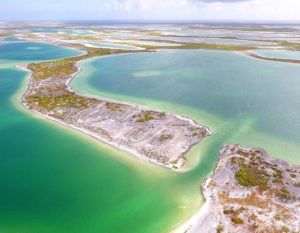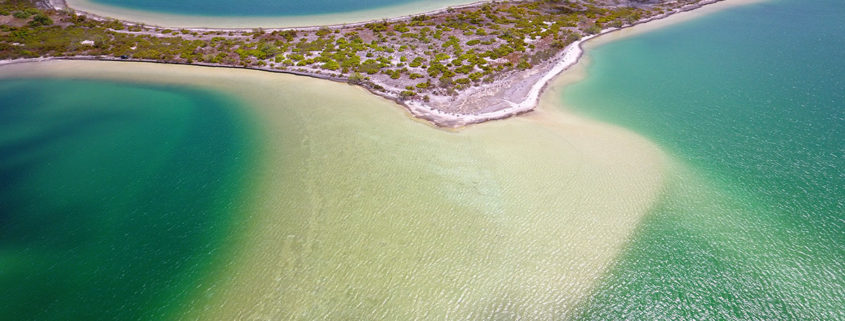Top 5 Things to look for in a DIY Bonefish Flat

Bonefish Flats Channel
Kiritimati (Christmas Island) has endless DIY bonefish flats. So many in fact, that you could spend months there and not explore them all. Unfortunately, you don’t have quite that much time, so what are the Top 5 things to look for? Read on…
The sun has just peeked over the horizon and breakfast is digesting nicely. You’ve hung a right and the half asphalt, half crab covered road has turned to sand. As you start to pass the multitude of flats that cover the bonefishing heaven that is Christmas Island, you wonder, which one do you stalk?
While exploration is one of the best aspects of DIY, you want to search smart. There are only so many hours in the tide, in the day and in your stay at Lagoon View Resort. If you can eliminate flats before you’ve committed any energy to them, you’ll spend more of your valuable time catching. Many do, but not every flat in the backcountry holds fish. The following tips will help you hone your search and make your coveted days more productive.
1. Look for wide edges and signs of life.
Some of the areas you’ll have access to are loaded with bonefish, too bad there’s no way get a fly to them. If you don’t have some room to see and stalk, there is no reason to stop. When you find a flat with some room to roam, one of the first things to look at are the edges. You want to see that something with heartbeat is there or has been there. Look for crustaceans and small fish. Look for signs in the sand that unknown things are moving about. This will at least help tell you that it’s worth pursuing further. Some of these flats hold nothing but water…
2. Shallow sand bridges between flats (crossing points).
I love, love, love these areas. You need to figure out when, but there will be fish moving between these bodies of water. Most likely this will happen on the tide changes. Once you figure out when, you can cast to fish after fish as they cross. Many times they will be very easy to see as well.
3. Shallow areas adjacent to deeper channels.
Both deep and shallow water areas offer bonefish security, but for different reasons. Shallow water offers escape from finned predators while the deeper waters protect them from us. They will come up from the deep edges, scour the shallows and move back into the deep. These are great areas to find fish. If these deep channels are between islands it’s even better as you know there will be fish traveling between them.
4. Decreasing refusals.
You found the right flat and you’re seeing fish, but getting refusal after refusal. Bonefish can be finicky. Sometimes very subtle differences in your fly can make or break the deal. When I am struggling to get fish to eat the first thing I will do is vary the strip. Slower, faster and pausing can sometimes entice your prey. If you feel like it’s the fly, put on something smaller and more sparse. The fish here love a sparsely tied fly. I’ve caught many a fish on essentially bead chain and a hook. Whites and tans always work. Some folks love orange, but I’ve never had good luck with that color. Unless you’re using 30lb tippet, that would be one of the last things to change. You will find times when the fish will just turn on, usually after snubbing you for cast after cast. These are magical times. The fish eat regardless of the fly, the strip or your tippet.
5. Our friend, the tide.
Almost all bone fishing is tide dependent. In many fishing destinations, we rely on the fact that the fish are trying to get into shallow areas as the tide is coming in. While this is true for many of the areas on Kiritimati, especially ones that the boat fisherman frequent, the backcountry is different. The fish move with the tide, but don’t follow typical patterns. If you find an area that holds fish, take some time and explore it in different tides. Most areas have a sweet spot and when you find it, the payoff can be dramatic. Something to note, the tide in the backcountry will be delayed, often by a couple hours. The further you are from the ocean, the bigger the delay.
For DIY fisherman, school is always in session. There shouldn’t be a day on the flat that you aren’t learning something about the area or the fish. The best fisherman I know are students and are constantly experimenting and trying new things. Don’t be afraid to change things up if you’re not getting the results you want!




